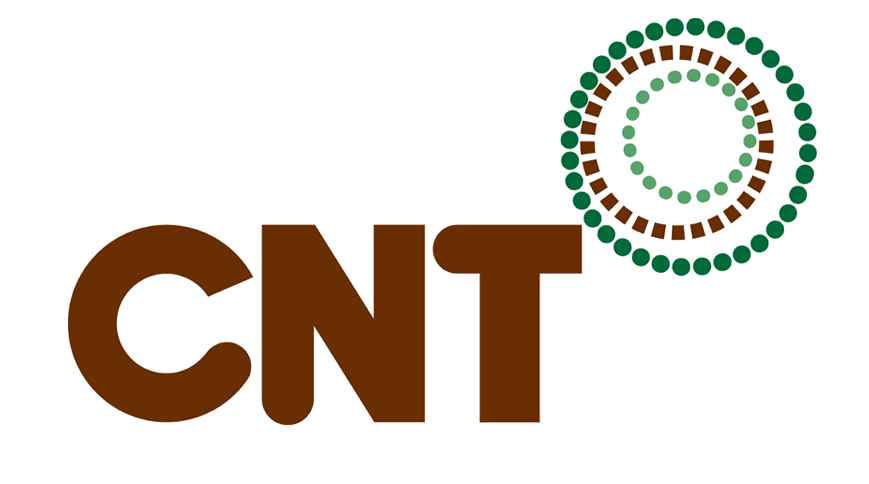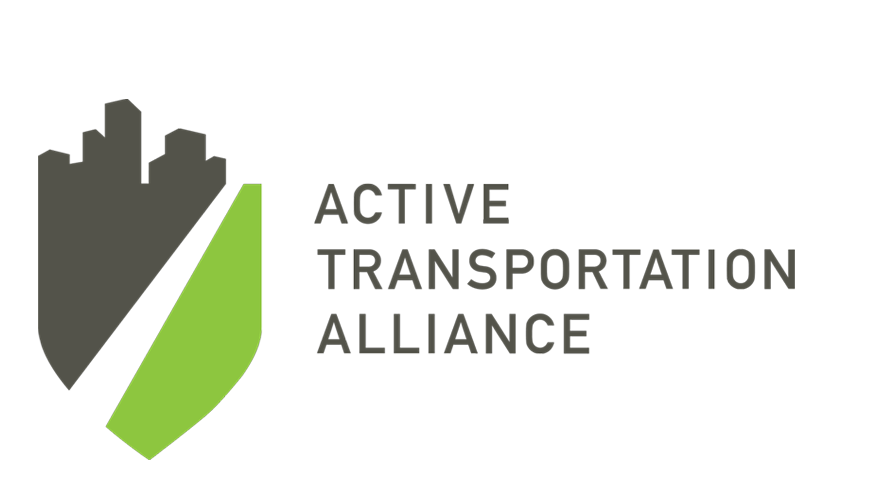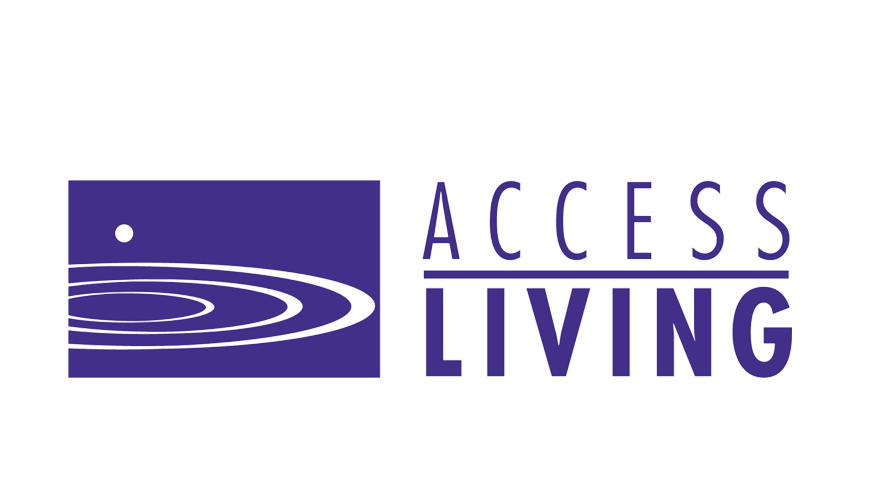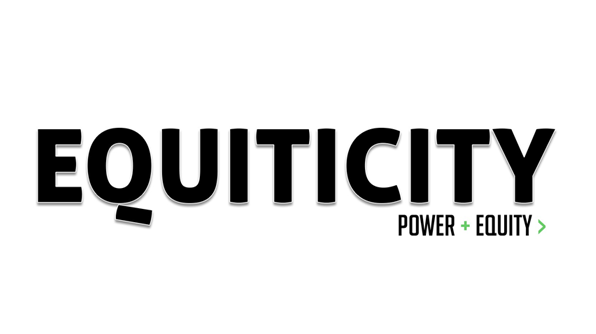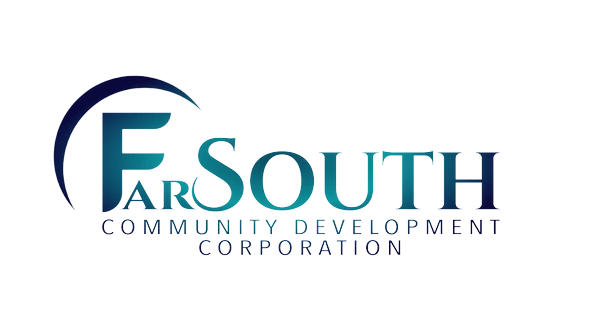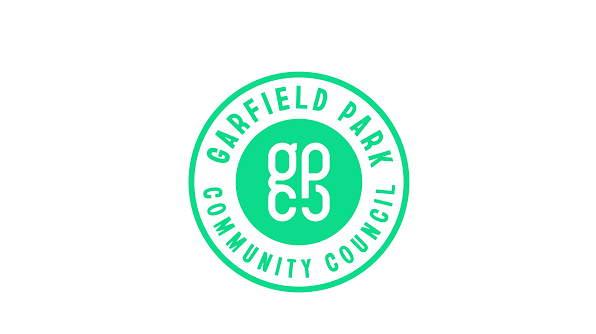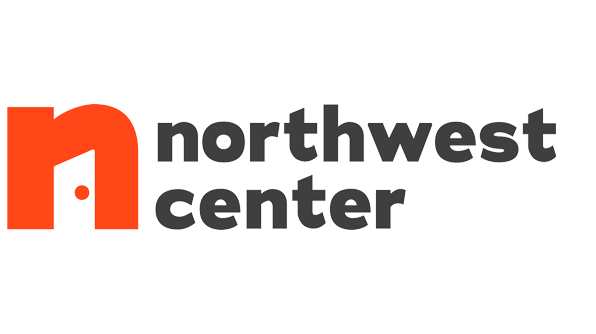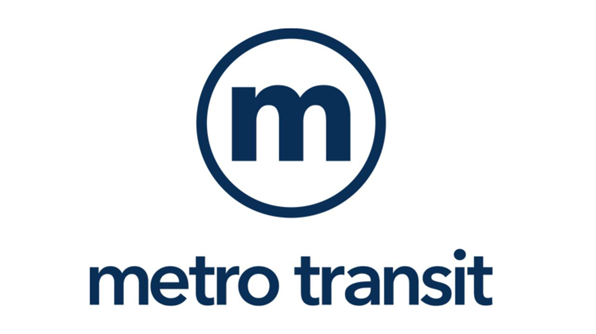We seek to advance bus priority corridors, up to bus rapid transit (BRT), as an equitable public transportation option in Chicago. The 2023 Better Streets for Buses Plan created with community input by Chicago Transit Authority (CTA) and Chicago Department of Transportation (CDOT) outlines a toolkit for bus priority infrastructure.
Better Streets for Buses Plan Learn more about TEN
This project positions community-based organizations (CBOs) to engage with their communities and with CTA and CDOT on next steps for the plan. We've been working on this initiative since 2023:
2025 Milestones
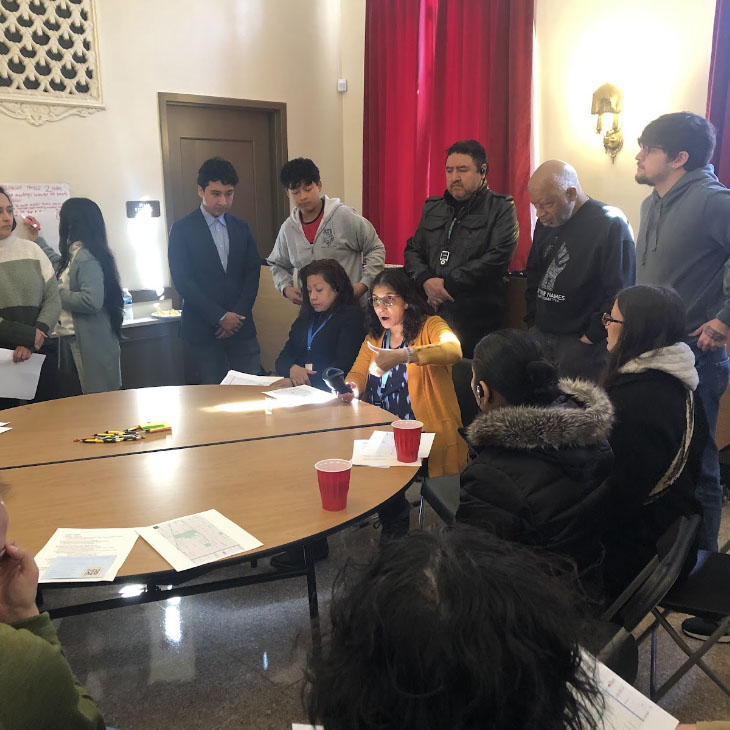
- CBO engagement events take place in their communities on the Better Streets for Buses Plan, BRT, and bus experience in general.
- A delegation of CBO, City, and elected stakeholders will be taking a field trip to Madison, WI to ride their newly established BRT lines to observe BRT in action and foster discussion to bring back to Chicago.
- TEN will work to synthesize the takeaways from the community events.
2024 Milestones

- TEN organized 8 coalition CBOs who work in communities on the South, West, and Northwest Sides of Chicago along the chosen priority corridors
- TEN worked with communications consultant, Fenton, to develop marketing materials for CBOs to use to assist them in strategic communications and messaging
- CBOs began planning for popular education events that would focus on the Better Streets for Buses Plan and getting preliminary community thoughts on bus priorty infrastructure
2023 Milestones
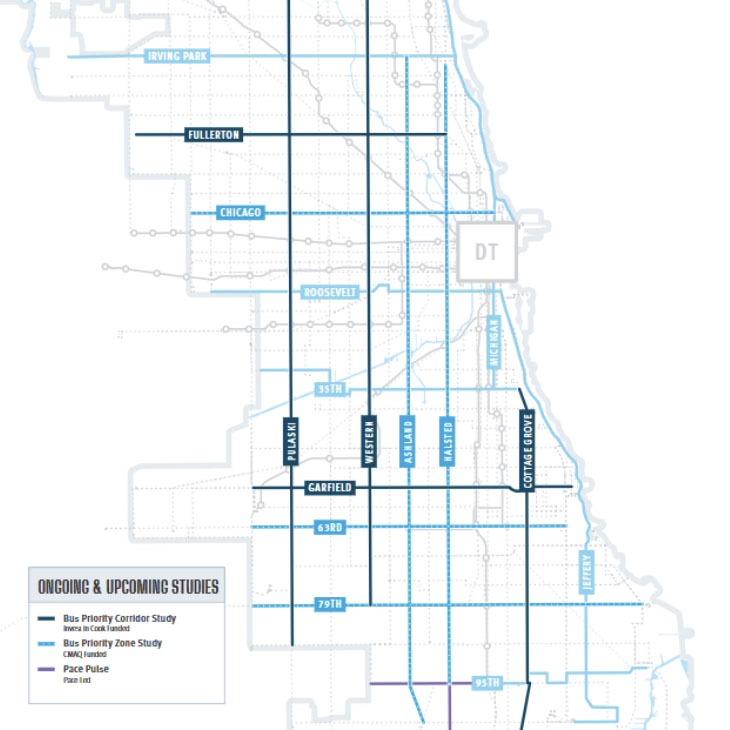
- A bus priority working group was of TEN members was created consisting of CNT, Active Transportation Alliance, Little Village Environmental Justice Organization, and Metropolitan Planning Council
- CNT's TEN coordinator interviewed coalition CBOs to gauge their support of bus priority infrastructure
- TEN then worked with CTA/CDOT to identify 3-5 priority corridors from the Better Streets for Buses Plan for a City-led RFP to conduct a feasibility study on bus priority infrastructure
Frequently asked questions
Jump to a question:
What is TEN?
The Transportation Equity Network (TEN) was formed in 2019 and is a Chicago-based coalition of community groups, equitable transportation advocates, local leadership, and others. TEN serves as a network of organizations that work with decision-makers to embed racial equity and mobility justice into transportation decisions and investments. TEN focuses on pressing topics such as: advocating for equitable decision-making processes in historically disinvested communities and transportation improvements without displacement. TEN centers community-based organizations (CBOs) in its work, investing in capacity building by ensuring they are compensated for their expertise. Learn more about TEN
What is Bus Priority Infrastructure?
Bus priority infrastructure are street improvements that can allow for faster and more reliable bus service. In the CTA/CDOT Better Streets for Buses Plan, these improvements are categorized in three ways:
1. Bus stop treatments that can help improve the waiting area and nearby sidewalks and crossings.
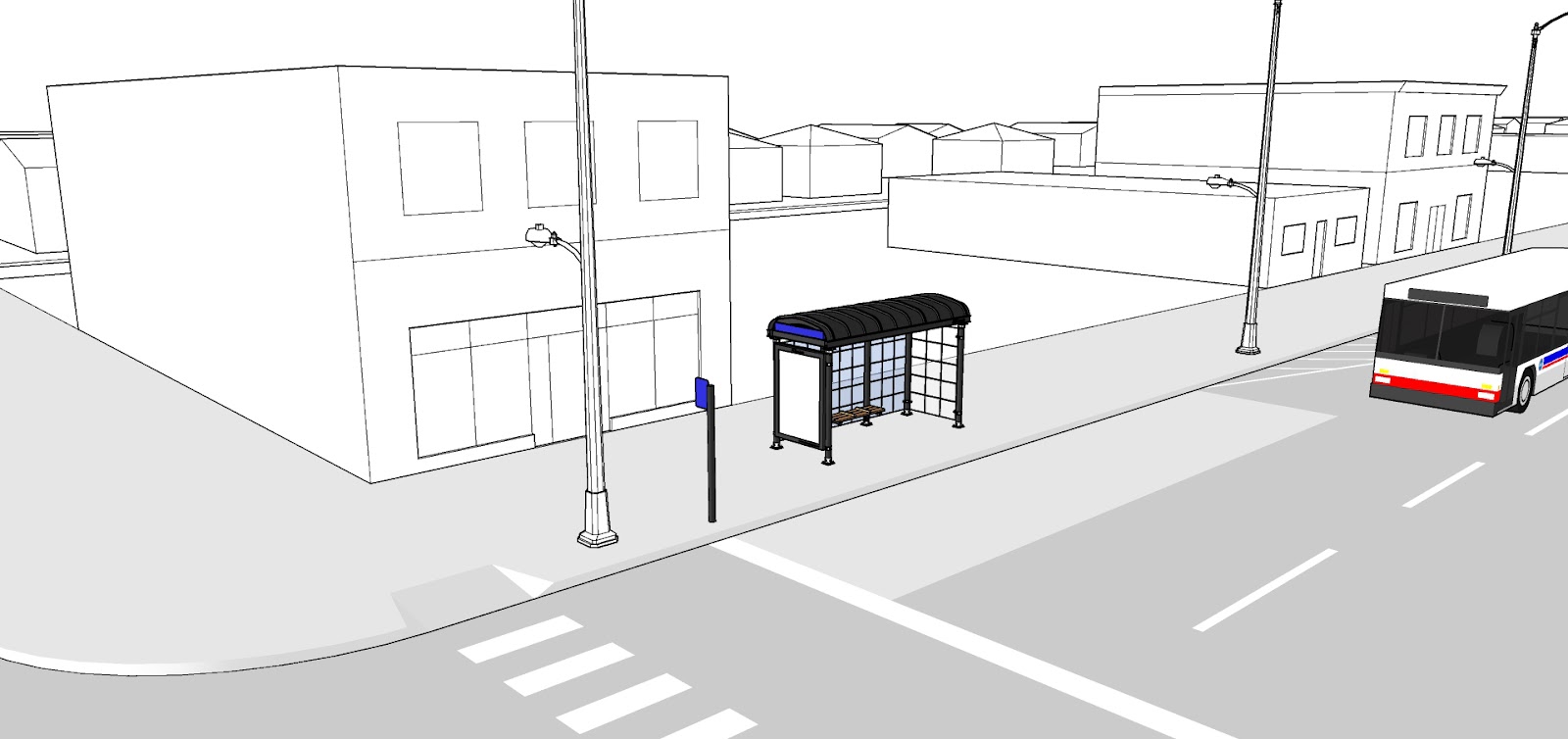
Covered shelter and bench, streetlights, and real-time bus information (Credit: CTA/CDOT)
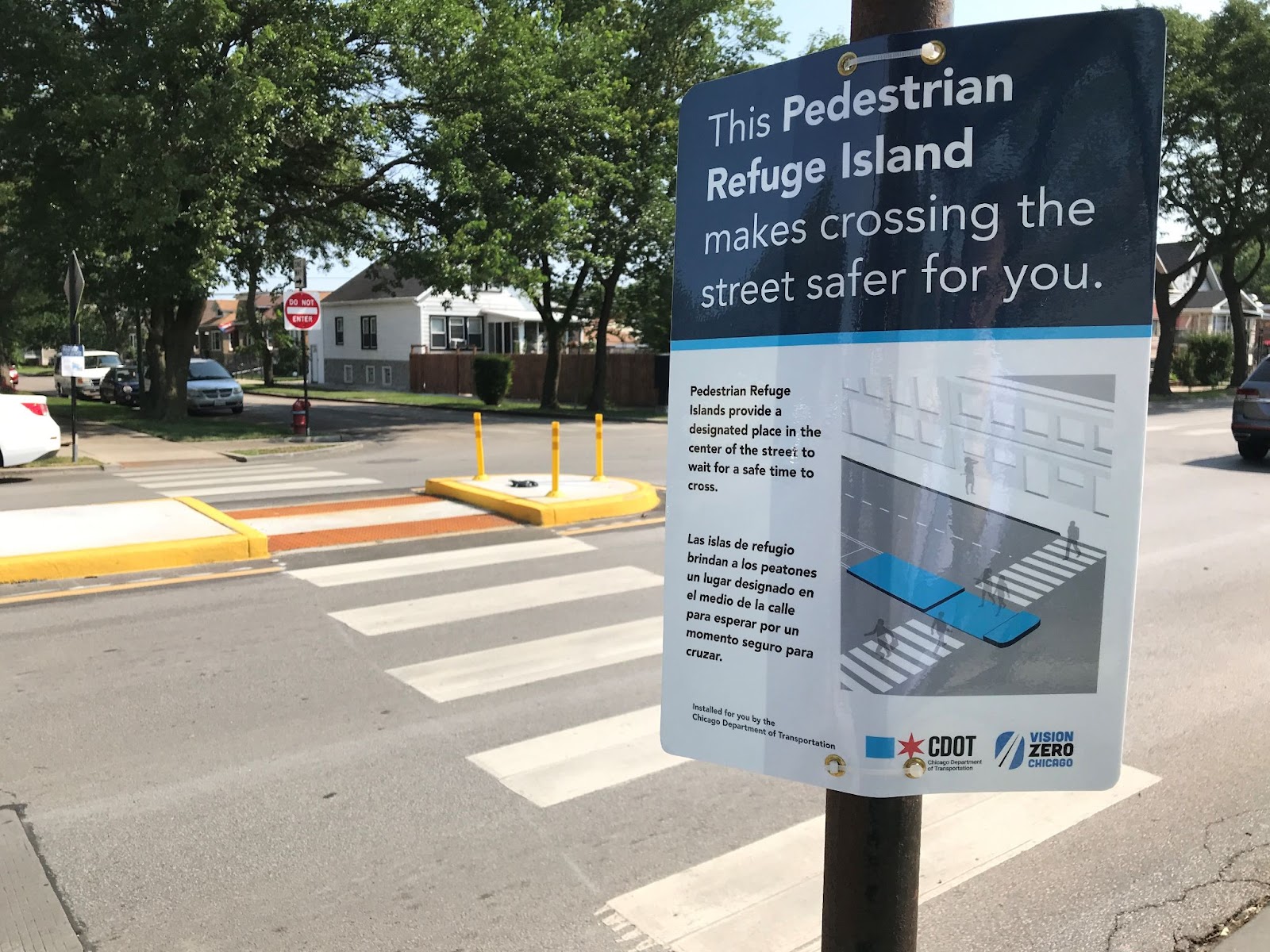
Example of improved sidewalks and crosswalks (Credit: CTA/CDOT)
2. Bus-friendly streets that can include bus lanes and other street configuration changes that help keep buses out of traffic and reduce delays. Some examples include but are not limited to Median Bus Lanes and Offset Bus Lanes.
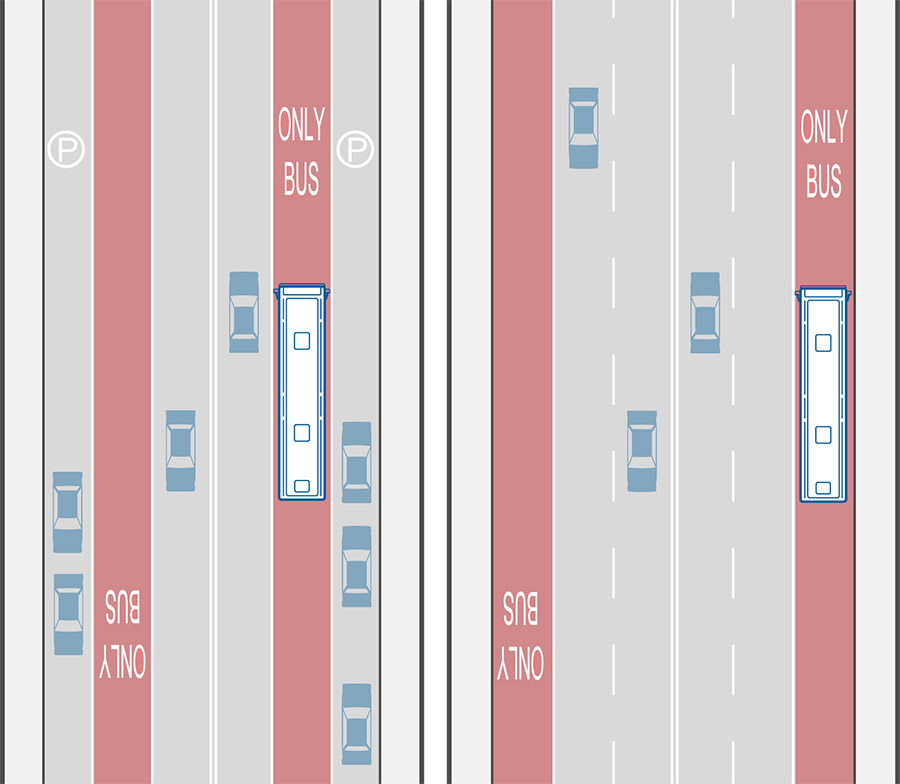
Left: Median Bus Lane with Left-Side Boarding: Bus uses the center lane and riders board/exit from a raised center concrete median. Requires buses with doors on left or both sides (Credit: CTA/CDOT)
Right: Offset Bus Lane: Bus lane uses the lane next to the parking lane (Credit: CTA/CDOT)
3. Bus-friendly intersections that generally relate to signals and signs that control traffic movement.

Left: Transit Signal Priority. If a bus is behind schedule, it sends a message to the traffic signal to request enough time of green light to pass. (Credit: CTA/CDOT)
Right: Queue Jump: the bus enters the queue jump lane to bypass general traffic. A separate, bus-only signal gives the bus a head start at the light.
Does Chicago have Bus Rapid Transit?
Chicago has elements of bus priority infrastructure in various parts of the city, but no dedicated BRT line. These elements include but are not limited to:
- Loop Link, which features level boarding stations and dedicated bus lanes in downtown Chicago
- Dedicated bus lanes along sections of Western and Chicago Avenue
The Chicagoland suburban bus agency, Pace, has also began to implement Pace Pulse lines in certain areas of the suburbs, which have elements of BRT infrastructure.
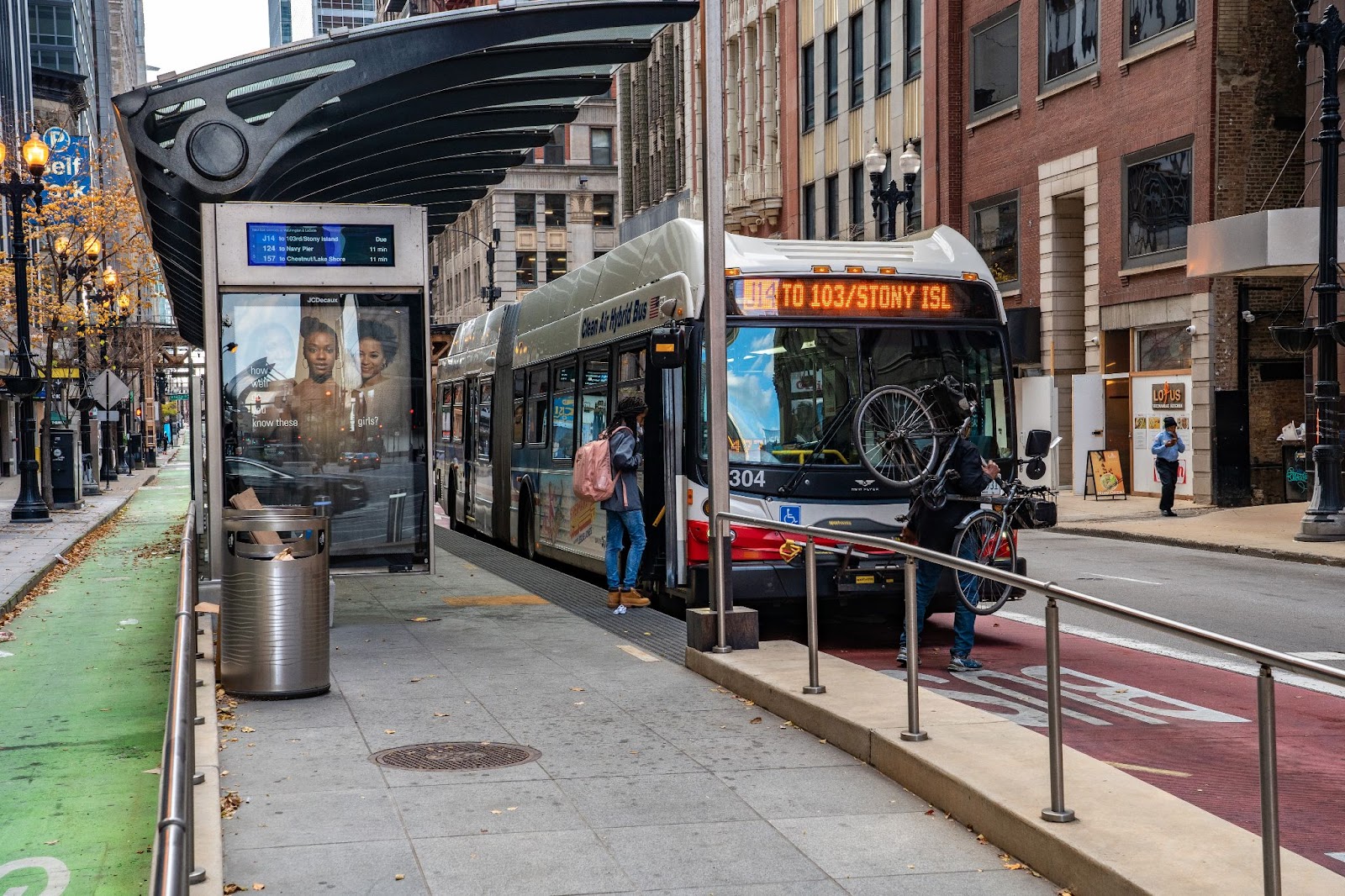
Level/Near-Level Boarding in Chicago's Loop Link (Credit: CTA/CDOT)
What is Bus Rapid Transit (BRT)?
BRT is a bus system that provides faster, more reliable and efficient bus service through the combination of features such as:
- Dedicated bus lanes
- Bigger on-level stations
- Traffic Signal Priority
- Pre-Paid Boarding System
Cities like Madison, Indianapolis, Los Angeles, Cleveland, and Boston have started implementing BRT systems.
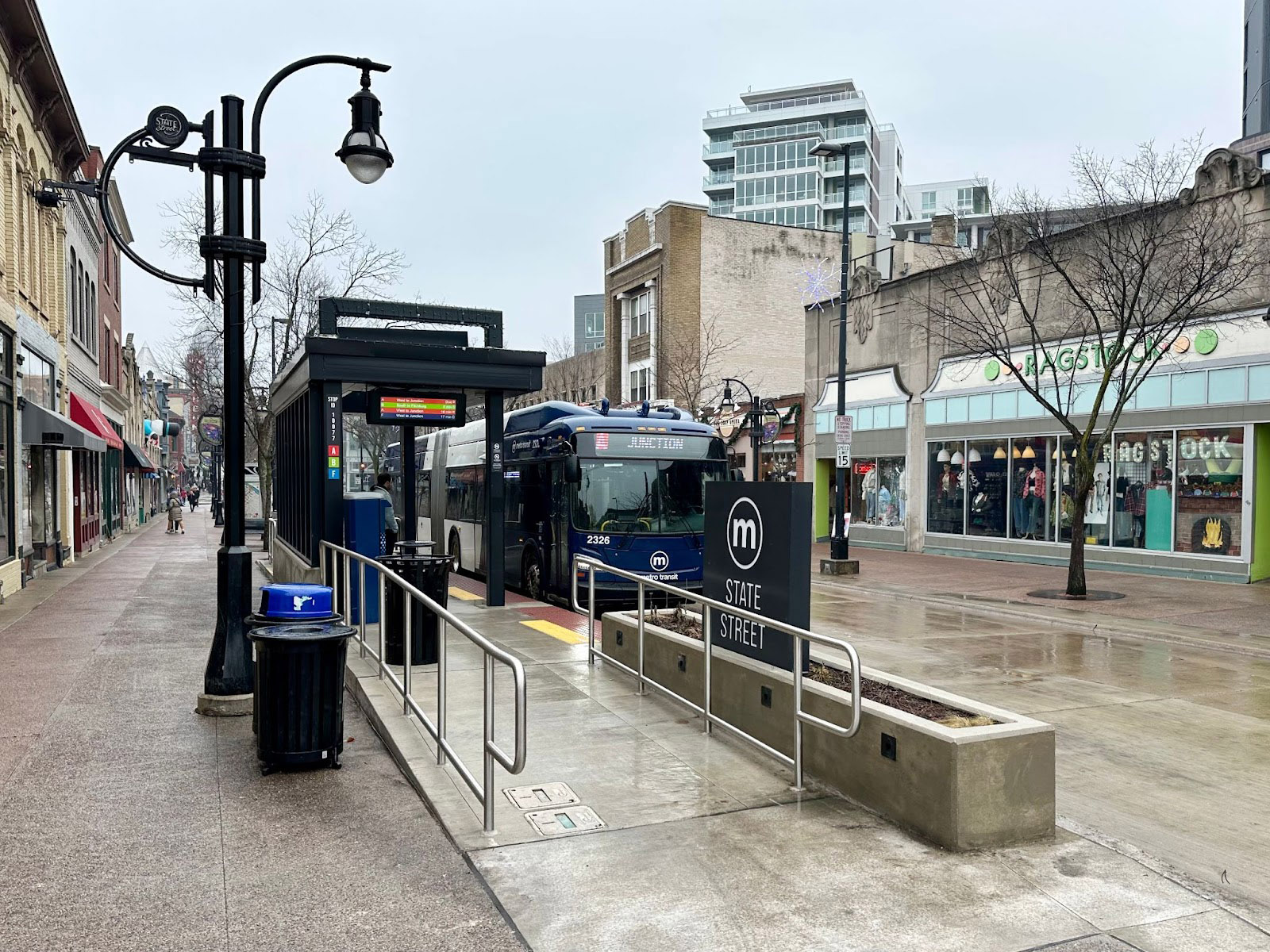
New Bus Rapid Transit Route in Madison, Wisconsin (Credit: Steven Vance)
How can I support bringing bus priority infrastructure or BRT to Chicago?
- Get involved with the Transportation Equity Network! Especially if you are a community organization based in Chicago. Get started by reaching out to Coordinator Julia Hage.
- Follow updates on an upcoming bus priority feasibility study to be conducted in five corridors (Western, Fullerton, Pulaski, 55th/Garfield, and Cottage Grove).
- Speak with your local alder about the possibility of bus priority infrastructure in your community.
Who is Involved?
The community-based organizations, equitable transit advocacy organizations, and civic organizations that are part of the Transportation Equity Network make this work possible.

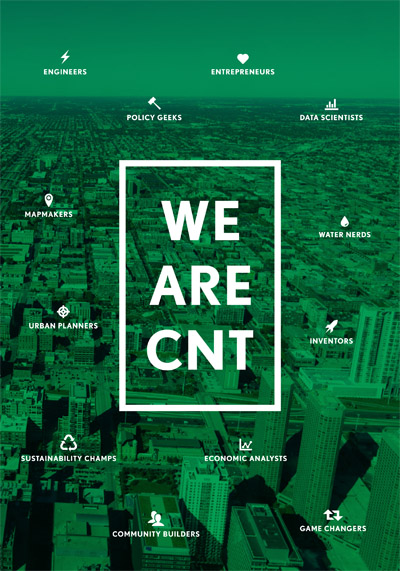

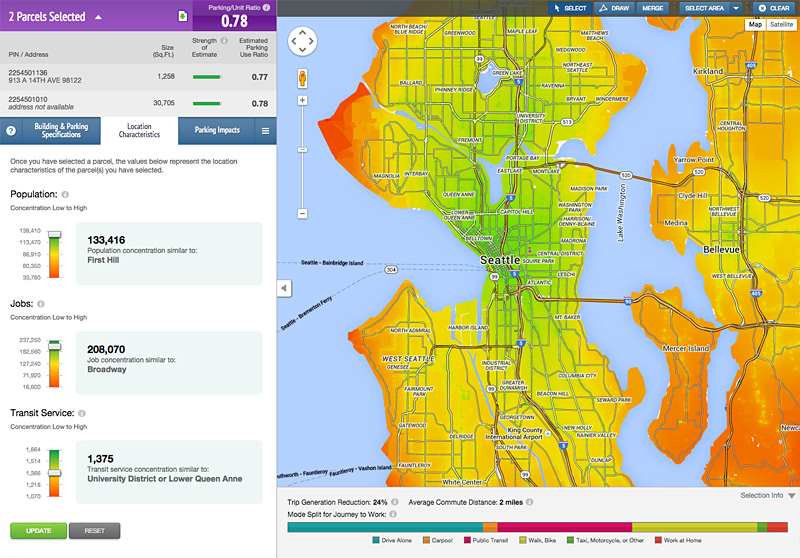
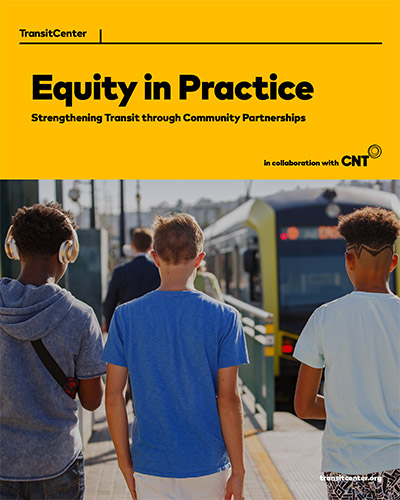
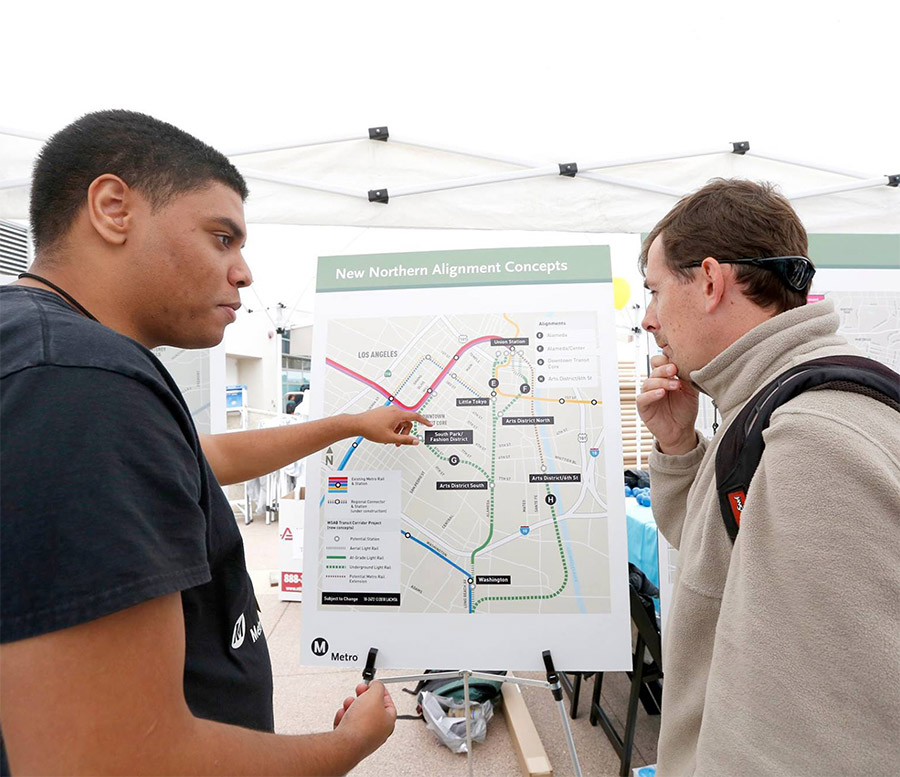 Strengthening Transit Through Community Partnerships
Strengthening Transit Through Community Partnerships